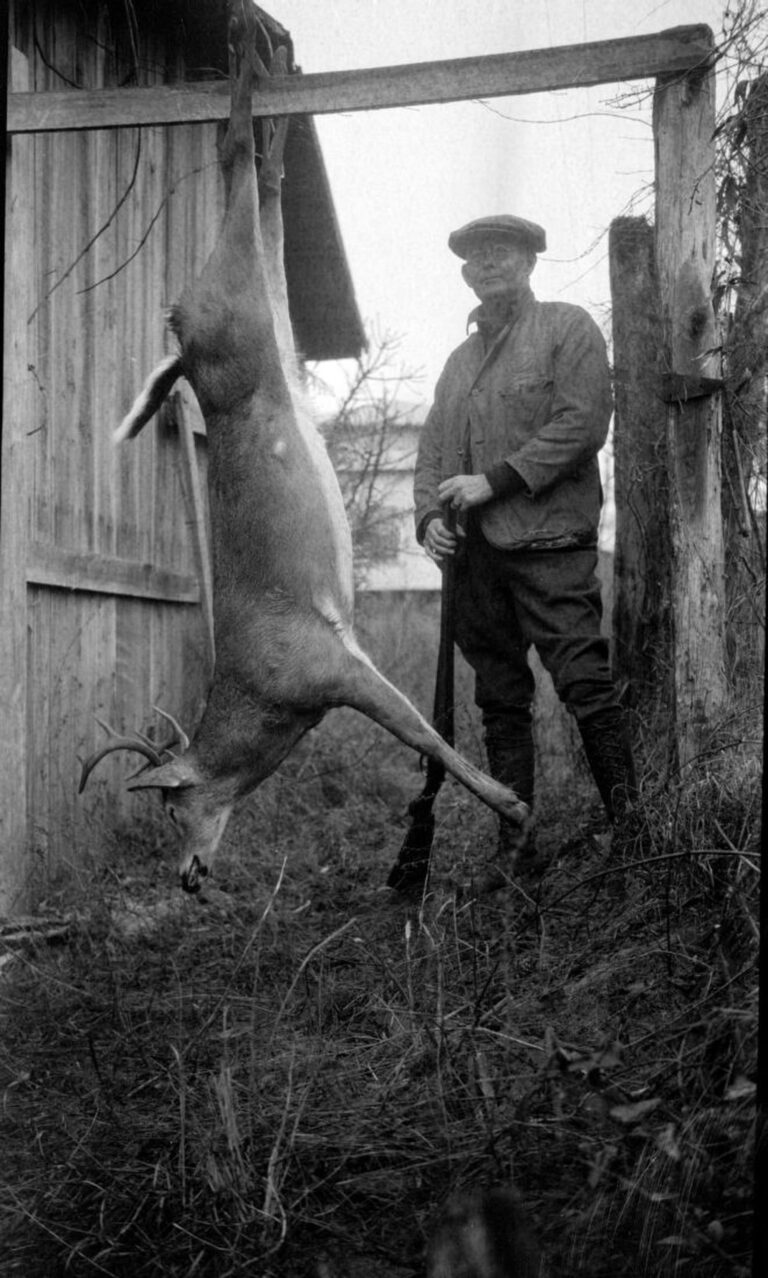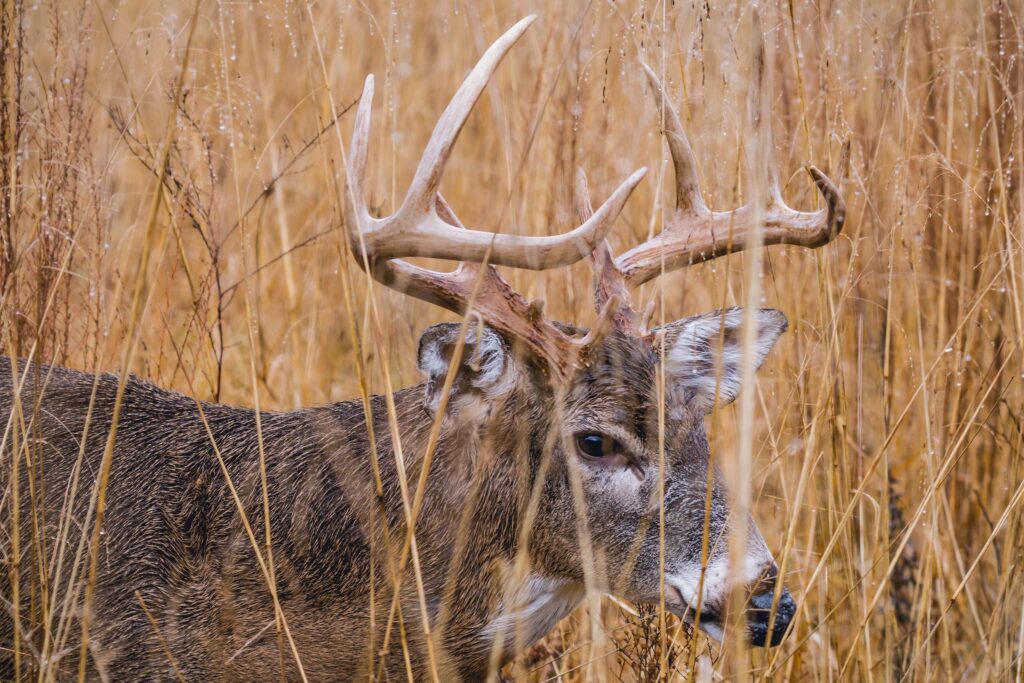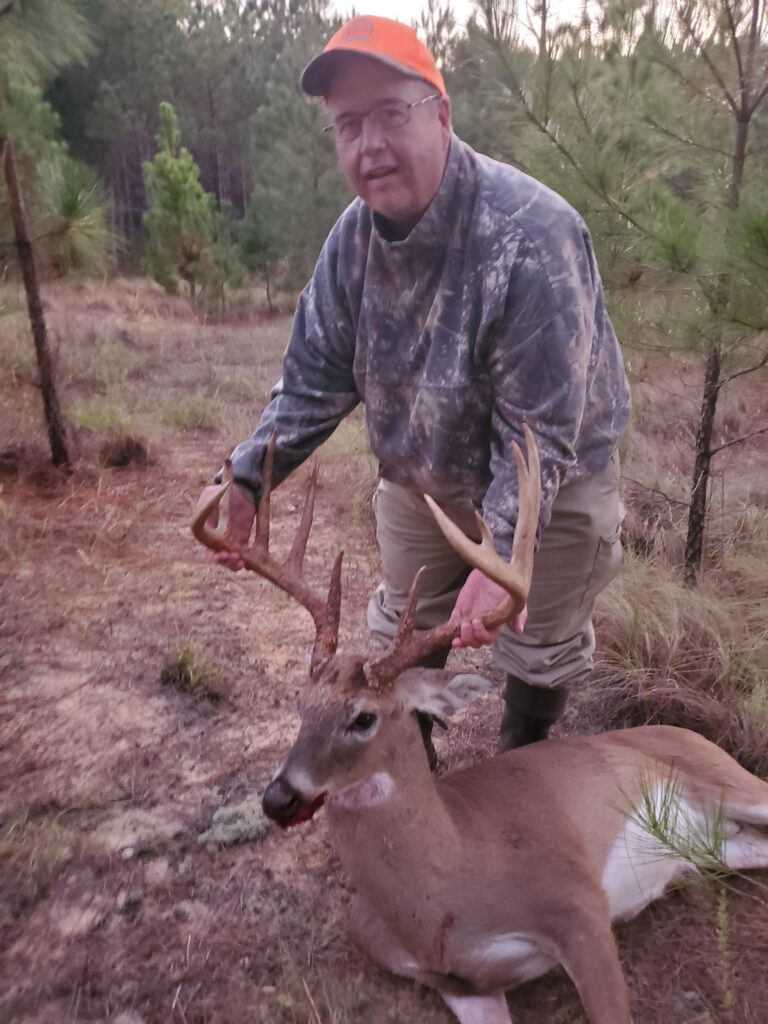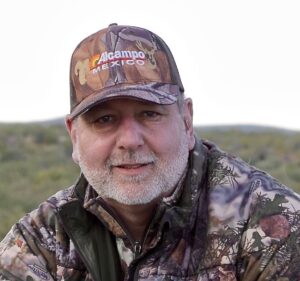By Angelo Baio
In the faded light of his driveway, down the road a piece from his hunting lease, Chris Fuller hastily shoots a photo of the biggest deer he’s seen in his life and texts it to his buddies. This was not just any whitetail mind you, this was one that later would qualify for the “Book”. You’d never expect it for a Sandhills buck from North Carolina but it seems the heyday of whitetail has spread its wings across America.
This scene is being repeated more often not only in North Carolina but also in other locations not historically thought about as a whitetail haven. It seems that the forward thinking wildlife management practices handed down to us by our predecessors have changed the landscape of modern day hunting and the health of our nation’s deer herd.

Historically Speaking
When you walk the halls of any major sporting goods store the walls are plastered with the mounts of one gigantic buck after another. Most are from the Midwest and taken years ago when those isolated farm bucks could remain out of view hidden in the back forty and allowed to put on some years
There is plenty of farm country in North Carolina but the southern hunting pressure of the past was heavy, and it took its toll. According to the North Carolina Wildlife Resources Commission, “Deer were plentiful when European settlers first arrived, but the animals were hunted extensively for meat and hide with no thought of conservation or management. Within 100 years, deer were threatened with extirpation in North Carolina, as well as in the entire United States.” We’ve spoken with hunters who said that as recently as twenty years ago there were counties in North Carolina where deer were so sparse that whitetail hunting wasn’t even worth the effort.
However today, with the guidance of forward thinking conservationists such as our late President Teddy Roosevelt, the tide has turned and deer herds have made a dramatic rebound. In fact, North Carolina is now believed to have a amassed a deer population of over a million strong.

Setting The Scene
Moore County, North Carolina is on the eastern half of the state where Chris hunts; an area not noted for fertile soils and has earned the moniker of the “sand hills” country. It’s also a place where good portions of the folks are hunting small private lots wherever they can find them or relegated to crowded state game lands. Today the problem has shifted from deer population to hunter access. Chris however is fortunate to be part of a small group of close friends who pooled resources and leased a five hundred acre farm.
The farmed land itself is predominately organic row crops and the remaining perimeter is small wood lots of longleaf pine. The straw from the longleaf pines is raked for landscape cover and devoid of natural deer food while the remaining lots are made up of shortleaf pine, oak and scrub brush. Some brush so thick you’d need a machete to penetrate it
If you knew Chris you’d notice that he’s a good ole southern gentleman who has an affinity for the outdoors. He’s not just a serious hunter; he’s a hard working family man and an avid vegetable gardener. His gardening skills spill over to an understanding of natural deer foods and an uncanny ability to cultivate deer food plots. This particular year during the early October black powder season, Chris was mainly hunting from his meticulously cared for food plot from a ground blind that he’ll eagerly tick-off stand time while awaiting the fall rut.
On this lease the group likes to have one location for a visiting hunter. They call the visitor’s spot the “community stand.” The stand is located mostly in the middle of the lease away from the other hunters and on the exterior edge of a vast field. Although not officially prepared for a hunter with its own blind, a stander can place himself about forty yards or so from its outer edge watching a heavy deer trail in between the lease and the neighbors and still get a great opportunity at a deer.
Deer like to travel in that raised sand hill trail between the two lots as evidenced by the deeply worn path. That thin edge of border woods is sparsely lined with mature pines and irregular stands of wild persimmon, grape vines and scrub oak. This season the farmer had five-foot high row crop growing for soil amendments that the deer were feeding on the plants flowers. Deer were also lying up in the thick cover the crop provided during the day making this is the perfect spot to catch a roving buck and exactly what Chris was shooting for when he decided to hunt it that evening.
Keeping An Eye Out
Chris and his crew are avid game cam users. They feel it gives them a good indication of the herd buck to doe ratio, the best movement times and indications when bucks start to move during daylight hours. They also share game cam pictures freely and had a pretty good idea of what the entire lease held with regard to mature bucks.
The community stand however did not have a camera posted on it; it was a raw hunting location and a hunter would rely mostly on luck. Chris knew the rut in his area tends to be the first two weeks of November so he didn’t mind giving his primary stand a break and a change of pace especially when the morning sit was a blank and the weather was less than ideal
Little did Chris know that about a mile or so down the road was a hunter he never meet, logging three years of game cam pictures of a monstrous deer that was in the pre-rut stage cruising doe out of his home range and about to come into to his life.
It Happened That Quickly
Starting out for the mornings sit in his primary stand, he nestled for the day only to find the conditions were less than ideal with winds blowing hard all morning and at times the gusts were up to thirty miles and hour. Trying to move the odds back in his favor he used his grunt call hoping the wind would carry the sound to a roving buck but again, no luck. The prospects weren’t good so he decided to break for lunch and then return for the evening sit.
That afternoon he thought to change things up and with only a few hours of light left he moved to the community stand. With two hours on the new stand sit under his belt prospects were again bleak. It’s at these times a hunter has to dig deep and just tough it out. At around 6 pm with the early evening sun lying low in the sky, it cast shadows that he hoped would kick start the nighttime deer movement.
Then, suddenly and unexpectedly from the right at about forty-five yards out, Chris catches a glimpse of a deer moving broadside through the pines on that very trail he was watching. The deer was walking at a brisk clip and was headed his way. Easily he noticed massive antlers and without hesitation he knew instantly he had to draw a bead on this buck.
As the deer approached the pines cut his window of opportunity to a minimum but he found a hole, pulls up his 50 cal. muzzle loader and fires. The three to five second black powder whiteout seemingly lasts for hours but he knew the deer was hit hard and low and behold the deer was down and not moving forty yards from where he fired.
The fact is that the majority of the time this is precisely how it happens, quick and then it’s over leaving you almost clueless on the details. Essentially it was all instinct. When he walked up to the deer he was stunned. The hesitancy he felt on a quick decision to shoot immediately melted away with the sight of this giant.
He also knew he would need a hand to get him out. A quick call to his hunting partner Greg who was also hunting the lease that night was in order. Wanting to share his good fortune he caught his breath and the whirlwind of phone calls, texts and shared pictures began.

Retrospection
Chris or his crew never seen that deer before but of course when someone takes a huge deer the word spreads like wildfire. In this case it didn’t have to travel far, only a mile down the road is a hunter named Matt Buroughs who had game cam pictures of Chris’s deer from as far back as three years. Matt explains,” Well after I stopped getting pictures of the deer I knew something had happened. It wasn’t like him disappearing. He would stay from October to the end of hunting season. Then one day in late November I was on a job site with my cousin, he said ” did you see the big one Chris Fuller killed” he showed me the picture and my heart sank I knew it was him. At the time I had no idea who Chris was so I reached out to him on [Facebook]. …. I told him if he would when he got him back from the taxidermist I would love to put my hands on him, I had lots of history and passed up on multiple shooter bucks waiting on Mr. Big, that was his nickname.”


Angelo Baio
calls the Sandhills region of North Carolina home and has sought high adventure hunts for more than forty years across the globe. Inspired by Jack O’Connor, chasing rams on the world's sierras, especially those of old Mexico has been at the top of the author's life list since childhood. You can follow more of Angelo's adventures here https://pursuelegends.blogspot.com
